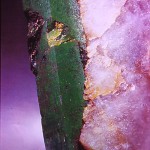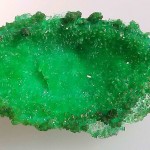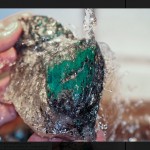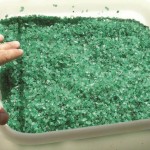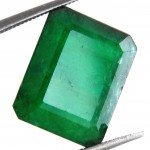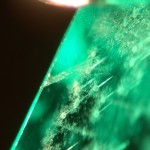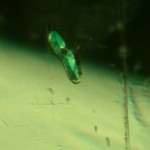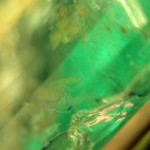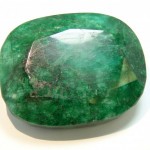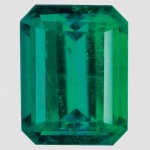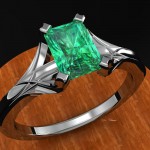The Emerald
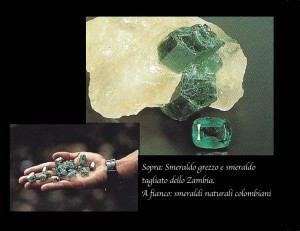 Emerald in Greek means “green stone”. and occurs in an infinite number of myths and legends. Two thousand years before Christ, emeralds, crudely worked, adorned the famous jewelry of Queen Cleopatra. He was considered a powerful talisman, able to protect from snake bite and able to restore sight to those who had lost.
Emerald in Greek means “green stone”. and occurs in an infinite number of myths and legends. Two thousand years before Christ, emeralds, crudely worked, adorned the famous jewelry of Queen Cleopatra. He was considered a powerful talisman, able to protect from snake bite and able to restore sight to those who had lost.
Features
Emerald is a variety of bright green pin. It is a stone of medium to high hardness (7.8 to 8 MOHS), crystallized in the hexagonal system. The coloring, which is due to the presence of small percentages of chromium and vanadium, is often unevenly distributed inside the stone, also marked by frequent occurrence of “inclusions”.
 Deposits and mines
Deposits and mines
The origin characterizes its green color. The most important deposits in the world are located in Colombia. The Indians of the ‘pre-Columbian America will possess an enormous amount. Important emerald mines are in Brazil, Pakistan and Russia. But Africa is contributing valuable coming from fields in Zambia, Zimbabwe and Madagascar.
The Quality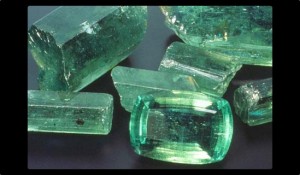
Obtain market an emerald completely devoid of those imperfections that are called “inclusions” is extremely difficult. If these inclusions are not too visible and do not subtract brilliance to the stone, not only should not be considered flaws, but even a hallmark of the origin of the same.
As evidence of this, an emerald of a beautiful green color with inclusions, may be worth much more than a stone completely free of inclusions but paler color.
The emeralds are generally faceted octagonal in shape with the characteristic cutting steps known fact “emerald”. As in other gems, emeralds with less transparency can often be cut “cabochon”, that is, a type of cut-free facets, by which is obtained a form with the top convex and flat base.
 CRG Italia
CRG Italia 